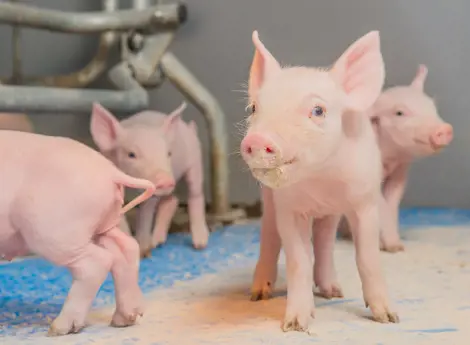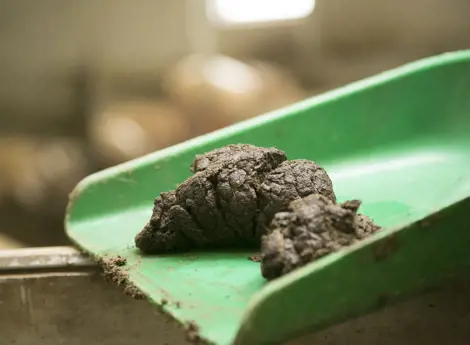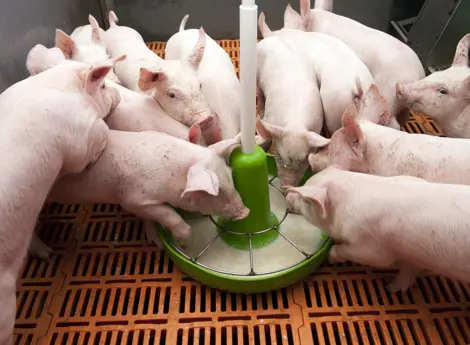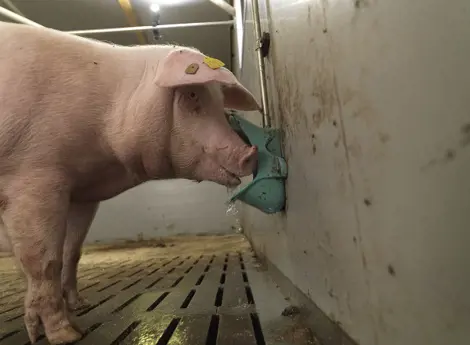Exploiting the qualities of Danish sows
The influx of Danish genetics into the Netherlands has continuously increased in recent years. This is motivated by the growing demand of foreign piglet buyers. On the basis of the knowledge and experience it has acquired, De Heus is providing recommendations designed to improve the results of working with Danish breeding material.
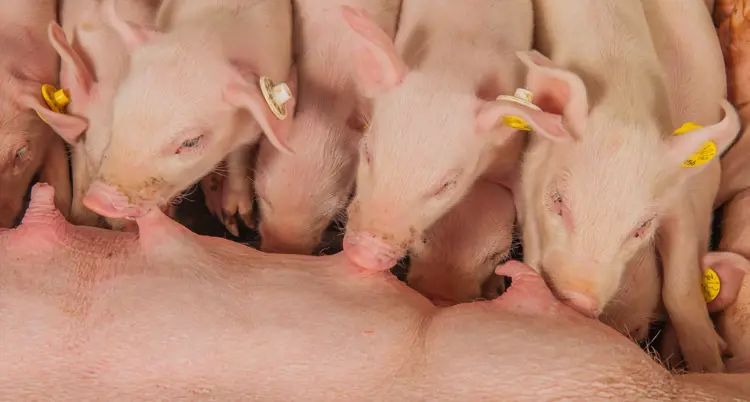
Experience with Danish genetics is limited, but is slowly increasing. A number of sow farms is switching to these sows by purchasing semen and through means of in-house breeding. Other farms are purchasing breeding gilts from abroad or from Dutch parent breeding farms. De Heus has acquired broad experience with Danish sows in a variety of ways. De Heus has been providing guidance on Danish genetics to farms abroad for some time. In addition, there is a high level of knowledge exchange with Danish colleagues and there is a high level of contact with TGZ, a distributor of Danish breeding material. Furthermore, in 2013, one of our Dutch De Heus' Research Farms switched to Danish genetics via a Dutch parent pig breeding farm. All of this means that a great deal of knowledge exists to compensate for any of the sow's objectionable characteristics and to effectively exploit its favourable characteristics.
Characteristics of Danish Sows
Danish sows are known for their high meat quality with a favourable fat-muscle ratio. And also for their large number of live-births. In the Netherlands they are often inseminated with Pietrain semen, because Dutch exporters are asking for this. Crossing sows with Pietrain furthermore also keeps the piglets interesting for the Dutch market. Danish pig breeders generally use Duroc boars as sires. They deliver at a body weight of 30 kg, which makes for visually appealing fattening piglets. Due to the higher body weight, these animals are more robust and more resilient in terms of health. A number of areas for improvement are also known for Danish genetics. For example, the number of functional teats is definitely not higher than with other sows, while the litters are greater. According to some, these sows are less durable and their feed consumption is higher.
Raising
Proper raising forms the basis for a successful production sow. An optimal raising period is essential. The health status of the breeding gilts with a Danish background generally is different from the health status of the sow herd to which the animals are introduced. Denmark is known for its SPF (Specific Pathogen Free) system. Generally this entails a PRRS, APP and Mycoplasma-free status. In some cases the animals are also free of Lawsonia (PIA). These animals, with high health status, generally end up on farms with a lower status. The danger then is that the Danish breeding animals with a higher health status become sick on the new farm. This also increases the infection pressure on the existing animals. It is extremely important that the supplied animals, after a six-week quarantine period, be subjected to a complete adaptation period of six to eight weeks. During this period they are administered all relevant vaccinations and the animals are brought into contact with the farm's pathogens. This way the breeding gilts are immune to these pathogens at the time they are going into production.
Nutrition and Weight
It is important that the weight and back fat properly correspond to age. On the one hand, the animals must be sufficiently developed. On the other hand, a breeding gilt that is too heavy also causes problems. In the latter instance, this concerns the legs for example. In case of leg problems, the metabolism parameters in the blood sometimes are out of balance. De Heus has a great deal of experience with blood research. This research provides a basis for dealing with these problems. Even more important: if the animals as breeding gilt are too heavy, they generally remain too heavy. As a result they require more maintenance feed throughout their entire production life. This explains the problems in Denmark with excessive feed intake and higher rates of replacement and culling. During the raising period undesirable meat animals are created that have difficulty generating back fat. This causes pressure sores at the shoulder blades to occur much sooner and means that sows are culled earlier in Denmark. This is why monitoring weight and back fat thickness, and providing for solid legs through means of feed gift, as well as feed type, is essential. In this respect, raising feeds must contain sufficient vitamins and minerals.
Recommended Condition
The average slaughtering weight of Danbred sows is 180 to 190 kg. You can check the weight of your sows on the basis of the slaughtering data. This enables you to monitor and manage the condition of the sows. Generally speaking, the sows used in the Netherlands weigh 160 to 170 kg at the time of slaughter.
Gestation
Provided that a sound basis has been created during the raising period, Danish sows do not require a great deal more feed during gestation in comparison to other genetics. Danish sows are good eaters and it is important to monitor that their feed intake does not progress too fast and that they are not fed too much. There are a number of areas that require attention. In particular, at the start of gestation, the feed level must be sufficiently high. This is important for maintaining serenity within the group and for ensuring a high level of fertility. Combining a low energy value (EW) with a sufficiently high level of crude fibre is also important. This too keeps the animals calmer and prevents them from gorging. In addition, it is important to monitor excessive muscle growth. In this respect, vitamin and mineral concentrations must be at a sufficiently high level.
Farrowing Period
Feed with a somewhat lower energy value (EW) is best suited for use in the farrowing compartment as well. Following installation in the farrowing room, the feed level must not be too high. Otherwise the chance of udder oedema formation increases and there are more likely to be farrowing problems and problems with the proper start-up of milk production. After farrowing, increase monitoring to detect an excessively fast start-up of feed gift. The feed intake in the farrowing compartment can be quite high after ten days. In Denmark, there is mention of feed intakes of as high as 12 kg per sow per day. The animals are fed three times per day, however, and the temperature in the farrowing room is kept sufficiently low (maximum 19°C). De Heus recommends that extreme feed intake be avoided so that sows do not generate too much muscle by the end of the farrowing period.
Use of Danish Genetics
Danish genetics can be used successfully on farms, but has a number of unusual characteristics. On the basis of De Heus' knowledge we offer you a welcome addition to the 'instruction manual'.
If you want to learn more about this topic, please contact your local De Heus' specialist



